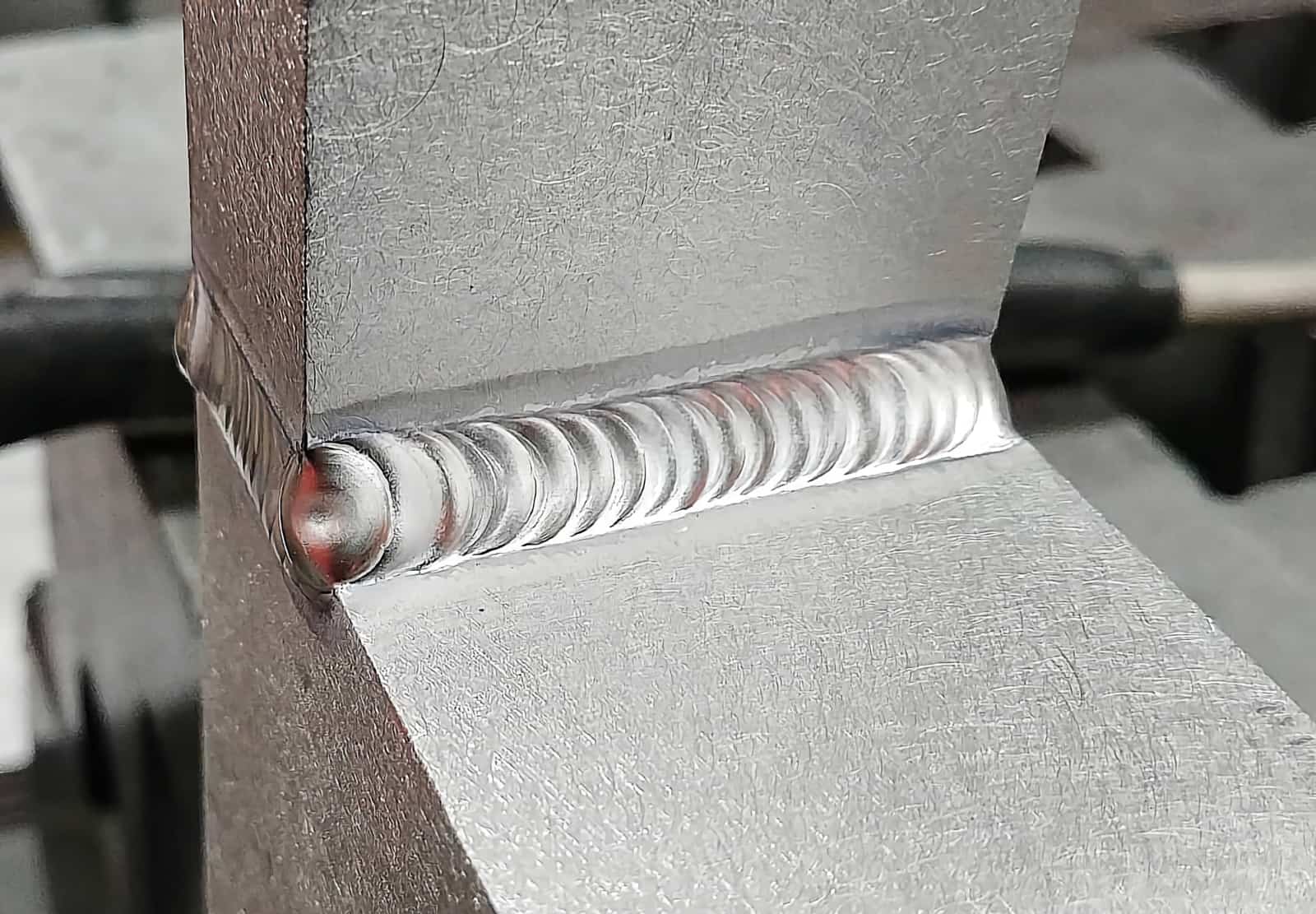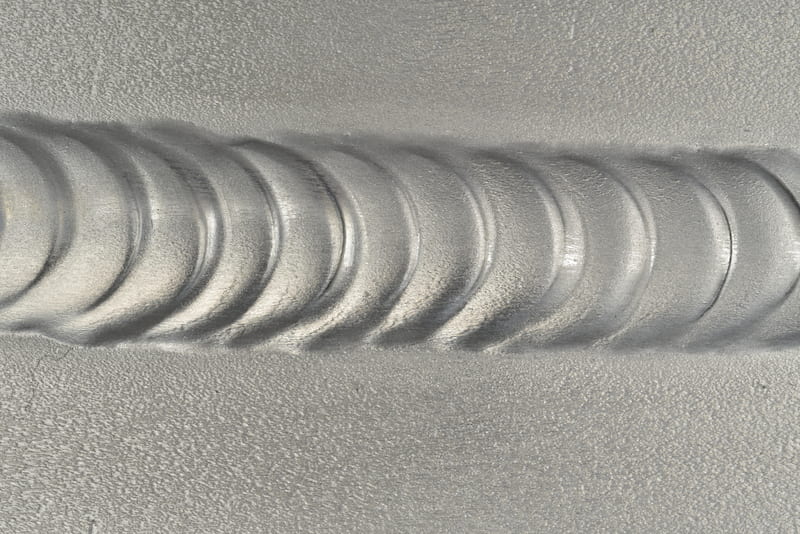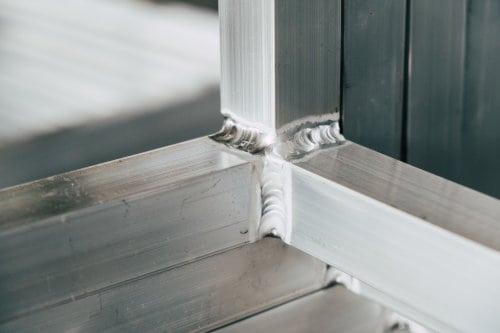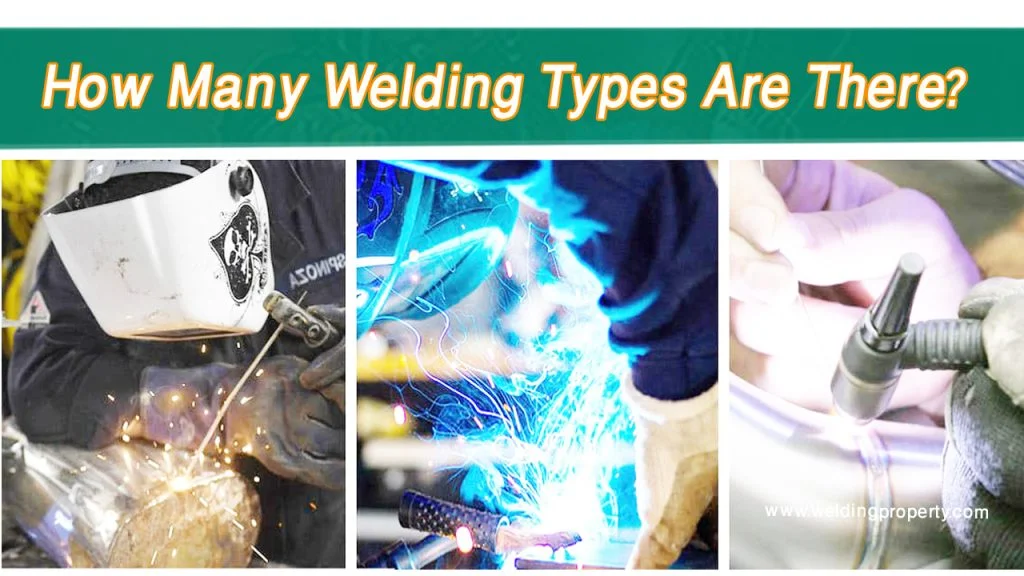Welding aluminum can be tricky. You need the right method for success.
Aluminum is lightweight and corrosion-resistant, making it popular in many industries. But its unique properties pose challenges for welders. The wrong technique can lead to weak joints and defects. So, knowing the best type of welding for aluminum is crucial.
Whether you’re a seasoned welder or just starting, understanding the right welding method ensures strong, durable results. In this blog, we will explore the most effective welding techniques for aluminum. This will help you achieve professional, high-quality welds every time. Stick around to discover which welding method suits your project best.
Common Welding Methods
Welding aluminum can be tricky, but with the right method, it becomes much easier. Let’s explore the three most common welding methods for aluminum. Each has its own advantages and challenges, so it’s essential to understand which one suits your project best.
Tig Welding
TIG (Tungsten Inert Gas) welding is often considered the gold standard for welding aluminum. It’s like the Swiss Army knife of welding techniques—versatile and reliable. But, what makes it so special?
- Precision: TIG welding offers great control, which is perfect for thin aluminum sheets.
- Clean Welds: The welds are cleaner and more aesthetically pleasing.
- Non-Consumable Electrode: The tungsten electrode doesn’t melt, providing a stable arc.
However, TIG welding requires skill and patience. Imagine trying to paint a masterpiece with a fine brush—it’s not for the faint-hearted!
Mig Welding
MIG (Metal Inert Gas) welding is another popular method for aluminum. Think of it as the workhorse of welding techniques. It’s faster and easier to learn compared to TIG welding.
- Speed: MIG welding is quicker, ideal for larger projects.
- Less Skill Required: Easier for beginners to pick up.
- Continuous Feed: Uses a wire feed, making it efficient.
But, it’s not without its quirks. MIG welding can be less precise, and you might end up with spatter—small bits of molten metal that splash around. It’s like cooking with a high flame; quick but sometimes messy.
Stick Welding
Stick welding, or Shielded Metal Arc Welding (SMAW), is the old-school method. It’s like the granddaddy of welding techniques. While it’s not the first choice for aluminum, it still has its place.
- Versatility: Works well in outdoor conditions, even in windy environments.
- Equipment: Requires minimal equipment, making it portable.
- Cost-Effective: Generally cheaper due to fewer tools needed.
However, stick welding aluminum can be challenging. It’s like trying to ride a bike on a gravel road—doable but not smooth. The welds can be rough, and it’s harder to control the heat.
In the end, the best welding method for aluminum depends on your project’s needs and your skill level. Whether you’re a precision-focused TIG welder, a speedy MIG operator, or a versatile stick welder, there’s a method out there for you. Happy welding!
Tig Welding For Aluminum
TIG welding is the best type of welding for aluminum. It offers precise control and clean welds, ensuring strong joints. Ideal for both thin and thick aluminum pieces.
TIG welding is the go-to method for welding aluminum. It’s known for producing clean and precise welds. This method uses a tungsten electrode to create the weld. It also uses an inert gas, like argon, to protect the weld from contamination. This makes TIG welding ideal for aluminum, which is very reactive to air.Advantages Of Tig Welding
TIG welding offers many advantages. The most notable is its precision. You can control the heat input very well. This helps to avoid burning through the thin aluminum material. TIG welding also produces high-quality, clean welds with fewer defects. It doesn’t create much spatter. This makes the post-weld cleanup easier and faster.Techniques For Successful Tig Welding
To weld aluminum successfully with TIG, keep these techniques in mind. First, always clean the aluminum surface before welding. Use a stainless steel brush to remove oxide layers. Next, use the right filler rod. Pure aluminum rods work best. Adjust the welding settings for aluminum. Use a high frequency start for a stable arc. Keep a steady hand and move slowly. This ensures even heat distribution.Equipment Needed
For TIG welding aluminum, you need the right equipment. A TIG welder with AC capability is essential. Aluminum requires alternating current to break the oxide layer. Use a tungsten electrode, preferably 2% ceriated or lanthanated. An inert gas, like argon, is crucial for shielding. A high-quality torch with a foot pedal or fingertip control helps manage heat input. Don’t forget safety gear. Wear gloves, a welding mask, and protective clothing. “`Mig Welding For Aluminum
When it comes to welding aluminum, one method that stands out is MIG welding. MIG stands for Metal Inert Gas, and this technique is well-loved for its efficiency and ease of use. If you’re a beginner or an experienced welder looking to work with aluminum, MIG welding might just be your best bet. Let’s dive deeper into why this method is so effective and how you can get started with it.
Benefits Of Mig Welding
MIG welding comes with a host of benefits, especially when working with aluminum. Here are some key advantages:
- Speed and Efficiency: MIG welding is known for its quick process. The wire feed system allows for continuous welding without constant stops to replace the electrode.
- Ease of Use: This method is relatively easy to learn, making it ideal for both beginners and seasoned welders.
- Versatility: MIG welding can be used on a variety of metals, not just aluminum. This makes it a great all-around welding technique.
- Cleaner Welds: The use of inert gas helps to prevent contamination, resulting in cleaner and stronger welds.
Tips For Effective Mig Welding
To make the most out of MIG welding for aluminum, consider these handy tips:
- Choose the Right Shielding Gas: Typically, 100% argon is recommended for aluminum welding. This gas helps to produce a stable arc and a cleaner weld.
- Adjust Your Settings: Aluminum requires higher heat input. Set your welder to a higher voltage and wire feed speed than you would for steel.
- Clean Your Material: Ensure your aluminum is free from any contaminants. Use a wire brush or chemical cleaner to remove oxides and dirt.
- Use a Push Technique: When welding, push the gun away from the weld pool rather than pulling it. This helps with better gas coverage and cleaner welds.
Required Tools And Materials
Before you start MIG welding aluminum, make sure you have the following tools and materials:
| Tool/Material | Purpose |
|---|---|
| MIG Welder | The main equipment for welding |
| Aluminum Wire | The filler material for your weld |
| Argon Gas | Shielding gas to protect the weld |
| Wire Brush | For cleaning the aluminum surface |
| Protective Gear | Safety first! Gloves, helmet, and apron |
With the right preparation and tools, MIG welding aluminum can be a straightforward and rewarding process. Whether you’re crafting a new project or repairing an old one, mastering MIG welding will open up a world of possibilities.

Credit: weldguru.com
Stick Welding For Aluminum
Stick welding, also known as Shielded Metal Arc Welding (SMAW), is a popular method for welding aluminum. This technique is known for its simplicity and versatility. It uses a consumable electrode coated with flux to lay the weld. Stick welding is widely used for its affordability and portability, making it a viable option for many welders.
Pros And Cons Of Stick Welding
Stick welding offers several advantages. It is simple and cost-effective. The equipment is portable, suitable for fieldwork. It works well in outdoor environments and on dirty or rusty materials.
Yet, stick welding has its drawbacks. It can be challenging for beginners. It produces more spatter than other methods. The welds may require more cleaning and finishing. It is also less efficient on thin aluminum.
Best Practices For Stick Welding
Preparation is crucial for successful stick welding. Clean the aluminum thoroughly to remove any oxide layer. Use a stainless steel wire brush for best results. Choose the right electrode, typically an E4043 or E5356. Adjust the amperage according to the electrode and material thickness. Maintain a steady hand and consistent speed. Avoid excessive weaving to ensure a strong weld.
Necessary Gear
Stick welding requires specific gear. A welding machine capable of DC output is essential. High-quality welding rods designed for aluminum are also needed. Wear protective gear such as a welding helmet, gloves, and apron. Use a chipping hammer and wire brush for post-weld cleaning. Ensure proper ventilation to avoid inhaling fumes.
Preparing Aluminum For Welding
Preparing aluminum for welding is a crucial step to ensure strong, durable welds. Aluminum is a versatile metal, but it requires specific preparation techniques to weld successfully. This section will cover essential steps such as cleaning, avoiding contamination, and preheating techniques.
Cleaning And Surface Preparation
Start by removing any dirt, oil, and oxide layers from the aluminum surface. Use a wire brush made of stainless steel. This avoids introducing iron contamination. Clean the surface with a degreaser or acetone. This helps remove oils and residues. Ensure the surface is dry before moving on.
Avoiding Contamination
Keep your work area clean to avoid contamination. Use dedicated tools for aluminum. Do not mix tools used for other metals. Wear clean gloves to handle the material. Contaminants can weaken the weld and cause defects. Store aluminum in a clean, dry place.
Preheating Techniques
Preheating aluminum helps reduce the risk of cracking. Use a propane torch or specialized heating equipment. Heat the aluminum to a temperature between 300°F and 400°F. Monitor the temperature with a suitable thermometer. Avoid overheating the material. Preheating also helps to remove moisture and reduce porosity in the weld.

Credit: fractory.com
Safety Considerations
Welding aluminum requires careful attention to safety. Aluminum welding involves high temperatures and can produce harmful fumes. Proper safety measures can prevent accidents and health issues.
Protective Gear
Wearing the right protective gear is crucial. Use a welding helmet with a proper shade. This protects your eyes from the bright arc. Safety goggles and face shields offer extra protection. Wear flame-resistant clothing to prevent burns. Gloves are essential. They protect your hands from heat and sharp edges.
Ventilation And Workspace Safety
Good ventilation is vital in aluminum welding. Welding fumes can be harmful. Ensure your workspace has proper airflow. Use fans or exhaust systems to clear the air. Keep the area clean. Remove any flammable materials. This reduces the risk of fire. Proper lighting helps you see clearly. It reduces the chances of mistakes.
Handling Aluminum Fumes
Aluminum welding produces fumes that can be dangerous. Avoid inhaling these fumes. Use a respirator designed for welding. This protects your lungs. Take breaks to get fresh air. Keep your face away from the fumes. Proper ventilation helps here too. Never weld in a closed space. Always prioritize your health and safety.
Expert Tips And Tricks
Welding aluminum can be a bit like trying to tame a wild horse – it requires patience, skill, and the right approach. But don’t worry, with some expert tips and tricks, you’ll be able to master it in no time. Below, we’ll delve into some key aspects that can make or break your aluminum welding project. Let’s dive into the nitty-gritty details that will help you achieve that perfect weld.
Choosing The Right Filler Material
Picking the right filler material is crucial for a strong weld. Aluminum alloys come in different types, and each has its own recommended filler. Using the wrong one can lead to weak joints or even cracks. So, what should you look for?
- Match the Alloy: Always try to match the filler material with the base aluminum alloy. For example, if you’re welding 6061 aluminum, use 4043 or 5356 filler rods.
- Consider the End Use: Think about how the welded piece will be used. If it’s going to be exposed to saltwater, 5356 is a better choice due to its corrosion resistance.
- Check Compatibility: Some fillers work better with specific welding processes. For TIG welding, 4043 is often preferred because it flows better and produces a cleaner weld.
Managing Heat Input
Heat management is another critical aspect when welding aluminum. Aluminum has high thermal conductivity, meaning it can quickly draw heat away from the weld area. This can cause issues like warping or incomplete fusion. Here are some tips to manage heat effectively:
- Use a Pulsed Current: This helps control the heat input by delivering energy in short bursts, reducing the risk of overheating.
- Preheat the Material: Preheating the aluminum to around 300°F (150°C) can help achieve a more consistent weld. But be careful not to overheat!
- Keep Your Torch Moving: Don’t linger too long in one spot. Keep the torch moving at a steady pace to avoid excessive heat buildup.
Avoiding Common Mistakes
Even seasoned welders can make mistakes. Here are some common pitfalls and how to avoid them:
| Mistake | How to Avoid |
|---|---|
| Not Cleaning the Aluminum | Always clean the surface before welding. Use a wire brush or a dedicated aluminum cleaner to remove oxides and contaminants. |
| Using the Wrong Shielding Gas | Argon is the best shielding gas for aluminum welding. It provides a stable arc and protects the weld from oxidation. |
| Improper Joint Preparation | Ensure the joints fit well and are properly beveled if necessary. Poor fit-up can lead to weak welds. |
Remember, practice makes perfect. Don’t get discouraged by initial challenges. With these expert tips and tricks, you’ll be well on your way to producing strong, clean aluminum welds. Happy welding!

Credit: www.gabrian.com
Frequently Asked Questions
Is Mig Or Tig Better For Welding Aluminum?
TIG welding is generally better for aluminum. It provides cleaner, more precise welds. MIG welding can be faster and is easier for beginners.
What Is The Trick To Welding Aluminum?
Clean the aluminum thoroughly before welding. Use a dedicated aluminum welding machine. Apply proper heat control. Use suitable filler material. Practice to perfect your technique.
How Good Is Jb Weld On Aluminum?
JB Weld works well on aluminum. It creates a strong bond, making it suitable for many repairs. Surface preparation is crucial for the best results.
Is Stick Welding Good For Aluminum?
Stick welding is not ideal for aluminum. It requires specific rods and techniques. TIG or MIG welding is better suited for aluminum.
Conclusion
Choosing the best welding type for aluminum is essential. Each method offers unique benefits. TIG welding delivers precise, clean results. MIG welding is faster and more versatile. Stick welding suits outdoor and rough conditions. Consider your project’s needs and your skill level.
The right welding technique ensures strong, durable aluminum joints. Happy welding!

